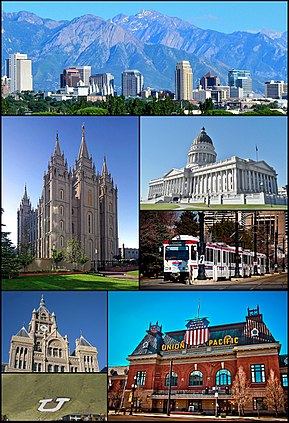Offer and Acceptance
Contract law is a complex area of law, and understanding the basics of how an offer and acceptance works is key in being able to effectively navigate contract law. This essay will provide an insightful examination of how an offer and acceptance works under contract law in the state of Utah. It will begin by providing a brief overview of contract law in Utah and will then discuss the role of an offer and acceptance in the formation of a contract. The essay will then examine the elements that must be present for an offer and acceptance to be valid, as well as the legal rules that apply to the revocation and termination of an offer. Finally, it will provide a few examples of how an offer and acceptance works in practice in Utah.
Offer and acceptance is one of the most fundamental principles of contract law. In order for a contract to be legally binding, there must be an offer made by one party (the offeror) and an acceptance of that offer by the other party (the offeree). The offer must be communicated to the offeree in some form, usually through a letter, post, or other form of communication. Once the offeree has accepted the offer, the parties are bound to the terms of the contract.
One example of offer and acceptance is the case of Byrne v. Bindley. In this case, the defendant, Mr. Bindley, was the owner of a horse which he decided to put up for sale by auction. The auction was advertised in a local newspaper, and an auctioneer was hired to conduct the sale. On the day of the auction, the defendant’s nephew, Mr. Byrne, attended and made an offer of £70 for the horse, which was accepted by the auctioneer. Under the rule of offer and acceptance, this was seen as a legally binding contract between the parties, even though the defendant was not present at the auction.
In another example, Abhay v. Bhavik, the defendant, Mr. Bhavik, offered to sell some goods to the plaintiff, Mr. Abhay, for a certain price. The offer was accepted by Mr. Abhay, and a contract was formed. However, after a few days, the defendant revoked his offer, which was seen as a breach of contract. The court ruled in favor of the plaintiff, and ordered the defendant to pay the agreed price for the goods.
Offer and acceptance is also seen in auctions. For example, in the case of Lord v. Post, an auction was held in April for the sale of some wool. At the auction, the plaintiff, Mr. Post, made the highest bid and was accepted by the auctioneer. This was seen as an offer and acceptance, and a legally binding contract was formed between the parties.
Finally, offer and acceptance can also take place through negotiations. In the case of Byrne v. September, the parties were involved in negotiations to purchase a horse. The offeror, Mr. Byrne, made an offer to the defendant, Mr. September, which was accepted. As a result, a contract was formed, and the parties were bound by its terms.
In conclusion, offer and acceptance is a key principle of contract law, and is seen in a variety of scenarios, from auctions to negotiations. In each case, an offer must be made, accepted, and communicated to the other party in order for a contract to be legally binding.
Overview of Contract Law in Utah
Contract law in Utah is governed by both state statutes and common law. Utah is a state that follows the “objective theory of contracts,” which holds that the parties to a contract must act in good faith and that the courts should interpret the contract according to the objective meaning of the language used, rather than the subjective intent of the parties. The Utah Code defines a contract as “an agreement between two or more persons to do or not to do a particular thing,” and states that “all contracts made in the state of Utah must be in writing, and if not in writing, must be proven by the testimony of two or more credible witnesses.”
Role of an Offer and Acceptance in Contract Formation
An offer and acceptance is a key element of contract law in Utah, as it is the process by which a contract is formed. An offer is a proposal made by one party to another, and an acceptance is the other party’s agreement to the proposal. The offer must be clear and definite and must be communicated to the other party. The acceptance must also be communicated to the other party and must be unconditional. Once an offer is accepted, the parties are legally bound by the terms of the contract.
Legal Definition of Offer
An Offer is a manifestation of willingness to enter into a bargain, so made as to justify another person in understanding that his assent to that bargain is invited and will conclude it. Black’s Law Dictionary (11th ed. 2019).
Legal Definition of Acceptance
An Acceptance is defined as: n. 1. the voluntary act of receiving something that is offered, with the understanding that the thing received will become the property of the acceptor and the act will create a binding contract. 2. in the law of contracts, the act of a party who knows of an offer made by another and agrees to all the terms. 3. in the law of evidence, the act of receiving or taking something into one’s possession, with the intent to control it, to the exclusion of all others.
Elements of a Valid Offer and Acceptance
In order for an offer and acceptance to be valid, there must be certain elements present. These elements include an offer, an acceptance, consideration, and a meeting of the minds. The offer must be clear and definite, and must be communicated to the other party. The acceptance must be communicated to the other party and must be unconditional. Consideration is a bargained-for exchange of something of value, such as money or goods. Finally, there must be a meeting of the minds, meaning that both parties must agree to the terms of the contract.
Rules Governing Revocation and Termination of an Offer
An offer can be revoked at any time before it is accepted by the other party. However, the revocation must be communicated to the other party. An offer can also be terminated if the offeror dies or becomes incapacitated, or if the offer has a time limit and the time limit has expired. An offer can also be terminated if it is rejected by the other party, or if it is rejected or counter-offered and the offeror does not accept the counter-offer.
Examples of Offer and Acceptance in Practice
Offer and acceptance is one of the oldest and most fundamental principles of contract law. It requires that two parties mutually agree to the terms of a contract before it can be formed. In recent years, this principle has been interpreted in a number of different ways by the courts in the state of Utah, making it important for all parties to understand their rights and obligations under this rule. This paper will explore the concept of offer and acceptance in the context of Utah case law and the Utah Code.
The first step in understanding offer and acceptance is to define the concept itself. According to the Restatement (Second) of Contracts, an offer is “the manifestation of a willingness to enter into a bargain, so made as to justify another person in understanding that his assent to that bargain is invited and will conclude it.” An offer can be expressed in words, by conduct, or even in writing. The offer should be sufficiently definite to identify the parties, the subject matter, and the terms of the agreement.
Once an offer has been made, the offeror must then wait for a response from the offeree. The offeree can either accept or reject the offer. If the offeree accepts the offer, a contract is formed. In order to determine whether an offer has been accepted, the courts look at the objective manifestations of the parties’ intent.
Binding Contract
Contract law is a body of law that governs the formation and enforcement of agreements between citizens, businesses, and other entities. It is based on a series of doctrines, principles, and rules, and is used to settle disputes in the event of a disagreement over terms, conditions, and other aspects of a contract. Negotiations are a major part of the contract formation process, in which the parties involved agree to the various terms, conditions, and prices of the contract. Offer and acceptance is the basis of contract formation, in which the offeror proposes a contract that the offeree may accept, reject, or make a counter-offer. The doctrine of revocation allows the offeror to revoke their offer before acceptance, but once accepted, the offer is generally considered to be binding.
Doctrine of Consideration
The doctrine of consideration is also important in contract formation, as it ensures that both parties contribute something of value to the contract. This could be money, goods, services, or even a promise to do something. Price is also an important factor in contract formation, as it must be agreed upon by both parties before the contract can be formed. In some cases, the parties may enter into a battle of the forms, in which each party submits their own version of the contract and works to negotiate the differences.
Doctrine of Invitation
The doctrine of invitation to treat is another important concept in contract formation. This refers to the offeror’s invitation to the offeree to enter into negotiations and consider the offer. This could be in the form of an auction, where an auctioneer invites bidders to participate, or an advertisement, where an offer is made to the public. The Pharmaceutical Society of Great Britain v Boots Cash Chemists (Southern) Ltd is an example of a case in which an invitation to treat was found to be binding.
In addition to the doctrine of invitation to treat, there are other specific principles of contract law. For example, the Unidroit Principles of European Contract Law and the Carlill case established the concept of a unilateral contract, in which a party makes an offer that does not require an acceptance. The case also established the concept of a binding contract, in which acceptance of an offer creates a legal obligation for both parties to fulfill their respective obligations.
Contract Disputes
When a dispute arises regarding a contract, both parties may turn to an arbiter or mediator to help resolve the issue. The important word is may – unless the contract provides otherwise, you might not have to use a arbitrator or a mediator, you can go straight to court; however, you may want to speak with a contract lawyer in your jurisdiction before you proceed to arbitration or mediation. With that being said, an arbiter or mediator is a neutral third party who listens to both sides of the dispute and helps them to reach a resolution. Once a resolution is reached, the parties are said to have contracted, and the contract is binding.
As seen here, contract law is an important part of our legal system, and it is essential to understand the various doctrines, principles, and rules that govern contract formation. Negotiations, offer and acceptance, consideration, revocation, and the doctrine of invitation to treat are all important concepts in contract formation, and they can help parties to reach a binding contract. In the event of a dispute, an arbiter or mediator can help to resolve the issue and ensure that the parties remain contracted.
Case Law
In the case of G.E.E. Corp. v. Aragon, the Utah Supreme Court found that an offer was accepted when the offeree responded to the offeror’s request for a price quote with a written quotation. The court found that the offeree’s response was a “manifestation of assent” to the offer and, therefore, constituted an acceptance of the offer. This case demonstrates that the courts will look to the objective manifestations of the parties’ intent in determining whether an offer has been accepted.
In addition to looking to the objective manifestations of the parties’ intent, the courts in Utah have also looked to the Utah Code in determining whether an offer has been accepted. Under the Utah Code, a contract is formed when “an offer is accepted by the offeree in the manner prescribed by the offeror.” This means that if the offeror specifies how the offer is to be accepted, the offeree must accept the offer in that manner in order for a contract to be formed.
For example, in the case of Peterson v. Jones, the Utah Supreme Court found that an offer had not been accepted when the offeree responded to the offeror’s request for a price quote with an oral agreement. The court found that the offeror had specified that the offer must be accepted in writing, and since the offeree had not accepted the offer in that manner, the offer was not accepted and a contract was not formed.
Real Estate Contracts
The concept of offer and acceptance is also relevant to the formation of real estate contracts in Utah. Under the Utah Code, an agreement to purchase real estate is not valid until the buyer has accepted the seller’s offer and the seller has accepted the buyer’s offer. The acceptance must be in writing and must be signed by both parties. In addition, the acceptance must be delivered to the other party either in person or by certified mail.
Sale of Goods and Services
The concept of offer and acceptance is also relevant to the formation of contracts for the sale of goods. Under the Utah Uniform Commercial Code, a contract for the sale of goods is not valid until the buyer has accepted the seller’s offer and the seller has accepted the buyer’s offer. The acceptance must be in writing and must be signed by both parties.
Offer and acceptance is an important concept in contract law and is essential for the formation of valid contracts. In recent years, the courts in Utah have interpreted this principle in different ways, making it important for all parties to understand the rule and their rights and obligations under it. This paper has explored offer and acceptance in the context of Utah case law and the Utah Code, and has demonstrated that the courts will look to the objective manifestations of the parties’ intent and the specific requirements of the relevant statute in determining whether an offer has been accepted.
Contract Lawyer Consultation
When you need legal help from a business contract attorney, call Jeremy D. Eveland, MBA, JD (801) 613-1472.
Jeremy Eveland
17 North State Street
Lindon UT 84042
(801) 613-1472
Recent Posts
The Utah Uniform Partnership Act
The 10 Essential Elements of Business Succession Planning
Business Succession Lawyer Salt Lake City Utah
Business Succession Lawyer West Jordan Utah
Business Succession Lawyer St. George Utah
Business Succession Lawyer West Valley City Utah
Business Succession Lawyer Provo Utah
Business Succession Lawyer Sandy Utah
Business Succession Lawyer Orem Utah























